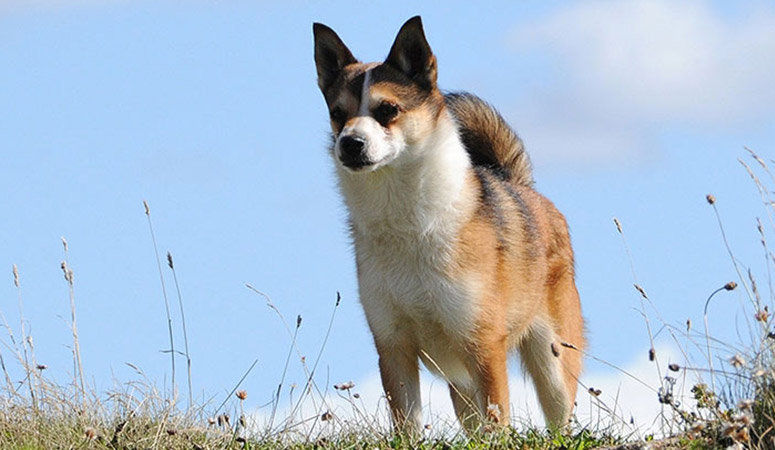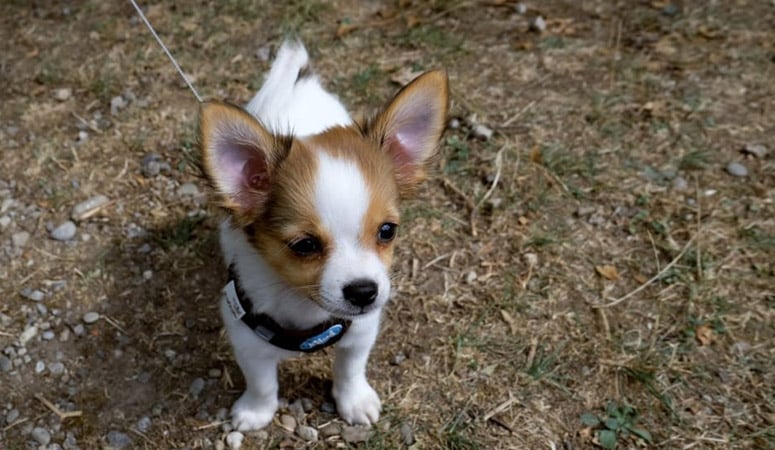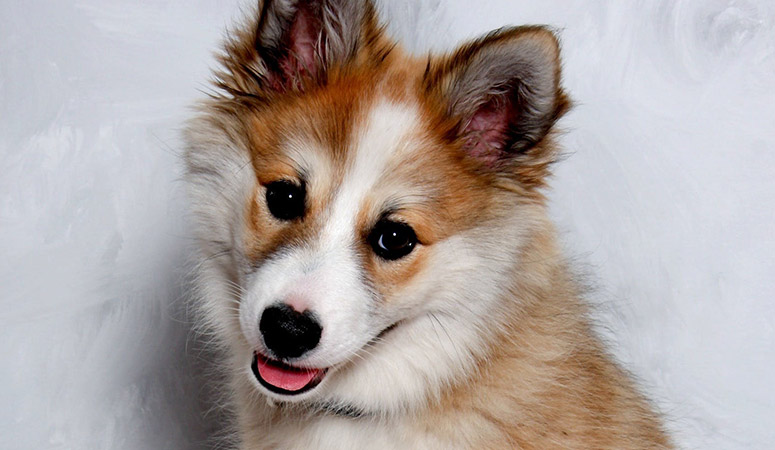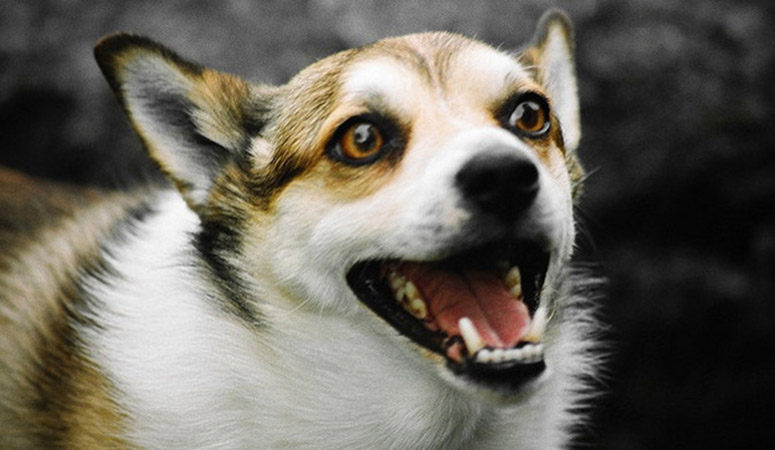Norwegian Lundehund
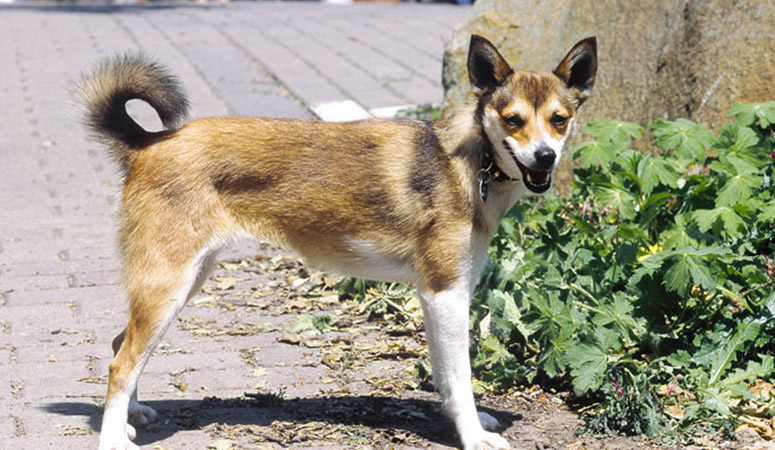
The Norwegian Lundehund was bred to hunt, originated from Norway. They usually scale coastal cliffs to retrieve live seabirds, such as puffins, and bring them back to his handler with six toes on each foot, and all of them are double- or triple-jointed, which give them an amazing range of motion. Friendly and athletic, Lundehund is a good companion of their family.
| Other Names | Lundehund, Norsk Lundehund, Norwegian Puffin Dog |
| Color | Black, Gray, Brown, White, Yellow, Sable & White |
| Height | Males: 13-15 inches. Females: 12-14 inches. |
| Weight | Males: 14-16 pounds. Females: 12-14 pounds. |
| Life Span | 12-15 years |
| Personality | Loyal, Energetic, Alert |
| Exercise | Needs Lots of Activity |
| Origin |
| Popularity | #192 |
| Groom Needs | Weekly Brushing |
| Kids Friendly | Yes with supervision |
| Dog Friendly | Yes with supervision |
| Watch Dog | |
| Family Dog | Yes |
| Litter Size | 4-8 puppies |
Norwegian Lundehund Pictures
Norwegian Lundehund Video
Introduction
Though there are several unique features of this breed, the most outstanding is its six toes on each paw, which is believed to be an adaptation for climbing cliffs, which was the original idea for breeding it. Other unique features include its ability to perform a wide range of movements at its joints, to enable it to squeeze into narrow crevices. It could fold its ears forward or backward to keep out foreign matter. The Norwegian Lundehund comes in a double coat, the undercoat of which is soft and covered by a dense and rough outer coat. It appears in different colors ranging from fallow to reddish-brown, a black tip usually develops as it matures.
A male Norwegian Lundehund is supposed to stand 13-15 inches tall from shoulder to paw, and weigh between 20 and 30 pounds. Females are slightly shorter at 12-14 inches tall and weigh in the same range as the males. Norwegian Lundehunds have an average lifespan of 12-15 years.
Living with Norwegian Lundehund
The Norwegian Lundehund has a low-maintenance double coat, a dense, rough outer coat and a soft undercoat. He needs shedding heavily twice a year or sheds small amounts daily.
Weekly brushing with a firm bristle brush will help to remove dirt and loose hair and keep the dog looking his best. During spring and fall shedding seasons, daily brushing will help keep hair under control.
Check the ears on a regular basis for signs of wax buildup, irritation or infection. And clean them with a cotton ball and a veterinarian-approved cleanser. Your careful weekly exam will help you spot potential health problems early.
Trim nails regularly as short, neatly trimmed nails keep the dog’s feet in good condition and protect your legs from getting scratched when your Lundehund enthusiastically jumps up to greet you. Handle his paws frequently — dogs are touchy about their feet — and look inside his mouth and ears.
Brush your Lundehund’s teeth at least two or three times a week to remove tartar buildup and the bacteria that lurk inside it. Of course daily brushing is even better if you want to prevent gum disease and bad breath.
The Norwegian Lundehund needs to be exercised every day with a long daily walk or jog. In addition, it will greatly enjoy sessions of play. If they get all the activity they need, they can fit in pretty much anywhere; but if not, he may become bored and destructive.
They particularly enjoy the chance to explore new places or any activity that engages their active minds. When playtime is over, he is happy to hang out by your side, which makes him a good fit for a condo or apartment. A house with access to a yard is the ideal living situation for the Lundehund.
Their playful nature means they often get along well with respectful children, although you may need to work on ensuring they don’t get too boisterous or jumpy around younger kids. It’s also a good idea to make sure they have lots of enriching interactive toys to keep them busy when you are at work.
The Norwegian Lundehund should do well on a high-quality dog food, which should be appropriate to the dog’s size, age, build, metabolism, and activity level.
The quality of dog food you buy also makes a difference — the better the dog food, the further it will go toward nourishing your dog and the less of it you’ll need to shake into your dog’s bowl.
The Norwegian Lundehund requires a special intestinal diet. He may be allergic to grain, so a grain-free diet may help. Ask your vet or breeder for their recommendation and care about their diet to cut down on gastrointestinal issues.
Some dogs are prone to getting overweight, so watch your dog’s calorie consumption and weight level. Treats can be an important aid in training, but giving too many can cause obesity, which can shorten a dog’s life by several years so it’s important to keep an eye on their waistline from the word go.
Clean, fresh water should be available at all times.
Learn about which human foods are safe for dogs, and which are not. Check with your vet if you have any concerns about your dog’s weight or diet.
The Lundehund is generally a healthy breed, but they may suffer from some health conditions. They prone to a number of gastrointestinal issues that can vary in their severity— Lundehund Syndrome, including ntestinal bowel disease (IBD), protein-losing enteropathy (PLE), small intestinal bacterial overgrowth (SIBO) and intestinal lymphangiectasia (IL).
They can affect all Lundehunds to some degree. But in some cases, dogs may be asymptomatic or only exhibit very minimal and easy to manage symptoms.
Changing their lifestyle and diet can help prevent some of the problems, and others may need more aggressive medical intervention. Not all Lundehunds will get any or all of these diseases, but it’s important to be aware of them if you’re considering this breed.
The Lundehund’s ears should be checked regularly to remove foreign matter and avoid a buildup of wax. The teeth should be brushed often, using a toothpaste designed for dogs.
Regular visits to the vet for checkups and parasite control help to ensure the dog a long, healthy life. There are several health tests considerations specific to the breed, such as ophthalmologist evaluation and patella evaluation.
Responsible breeders test all breeding stock for conditions that can affect the breed.
Total Annual Cost: $2674
Cost is estimated for the first year and may vary depending on many factors, such as dog food, health care, leash, collar, licensing, possible fencing, crates, training and obedience classes, dog-walking, grooming, treats, toys, flea, tick, and heart-worm meds, microchips, etc.
Lundehunds are intelligent problem solvers, but they also have an independent and sometimes stubborn streak. This means you may need to keep training sessions short and varied to hold their interest.
While they’re a friendly breed, they can be wary of strangers. Early socialization and puppy training classes are recommended and help to ensure that the dog grows into a well-adjusted, well-mannered companion.
The Lunde is known for being an alert barker, and this can get out of control if you don’t work on rewarding them for offering quiet, alternative behaviors instead.
They’re also often prolific diggers, so your garden should be secure to prevent any escaping with supervision and to work on training if this becomes a habit. Provide them with a designated sandpit as an outlet as their digging instincts can also be beneficial.
Their hunting instincts mean they won’t always live peaceably alongside small furries. You may also need to work harder on achieving a solid recall, especially when you walk regularly in places that are a haven for wildlife. They do tend to get along well with other dogs, though.
The Norwegian Lundehund is intelligent but can prove to be stubborn when it comes to training. Using positive reinforcement and high-value rewards will help to keep them motivated. Harsh training methods should never be used.
House training is a little difficult for Lundie, and crate training early will help curb this problem, which can prove to be easier with this breed, as it likes to be in cave-like spaces.
History
The Norwegian Lundehund was bred to hunt Puffin, hence the name (Lunde was a word for puffin). The breed was developed in a little island, Vaeroy, off the coast of Norway. The primary aim for its breeding was to hunt puffin which ingeniously hid within rocky crevices in the cliffs on the island. The physical attributes of the Norwegian Lundehund are specialized for this purpose; its extra toes for better grip of the cliff, the dog is able to reach into crevices to pick off the puffin, due to its flexibility. The Norwegian Lundehund is characteristically active, determined, and alert. However, interest in the Norwegian Lundehund declined slowly as more advanced methods for hunting puffins emerged, and even drastically when hunting of puffins was made illegal in some regions.
The Norwegian Lundehund almost disappeared as a result of the events of the Second World War and the sudden outbreak of canine distemper in Vaeroy during the period. Another outbreak of distemper struck in the 1960s, which almost spelled the death knell for this breed. It was more devastating this time, only less than seven dogs were recorded to have survived, in the whole of Norway. However, with strict and intentional breeding, Norwegian Lundehunds have slowly bounced back in their numbers. Twenty-seven years after the breed arrived in Canada, it was introduced into the United States in 1987, owned by one Paul Ross. The following year, a breed club, the Norwegian Lundehund Club of America, was established. The Norwegian Lundehund was later admitted into the American Kennel Club (AKC) Foundation Stock Service in 1996, fourteen years before it gained official recognition in 2010.
Helpful Information
Breed Club: NORWEGIAN LUNDEHUND ASSOCIATION OF AMERICA
Breed Club Link: http://nlaainc.com/
Breed Club Rescue: Norwegian Lundehund Association of America Rescue
Breed Club Rescue Link: http://nlaainc.com/links/rescue/

